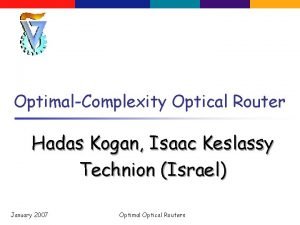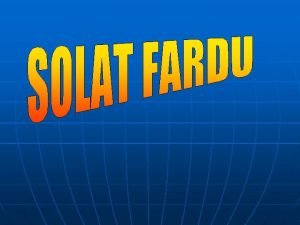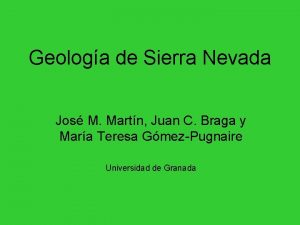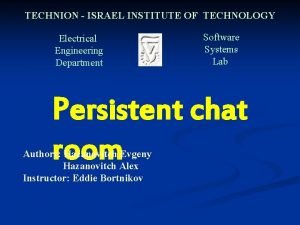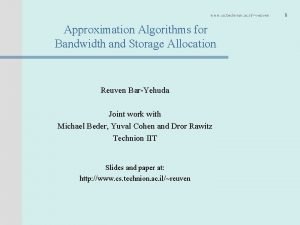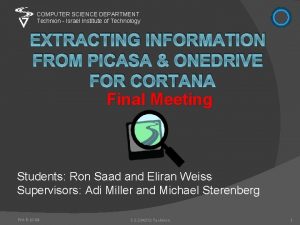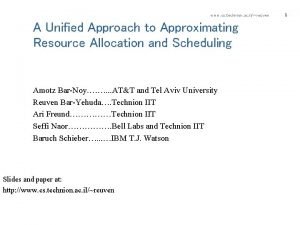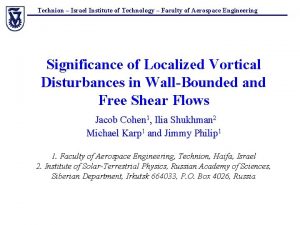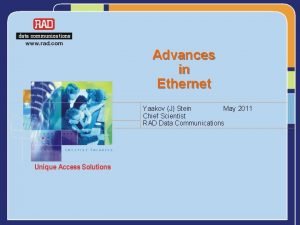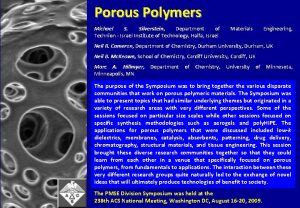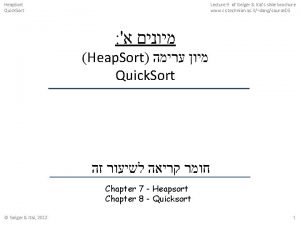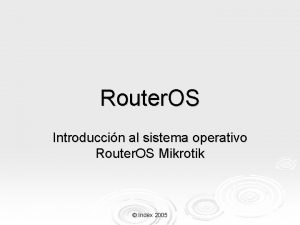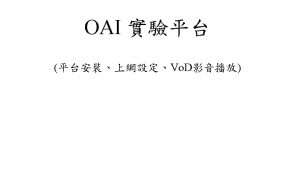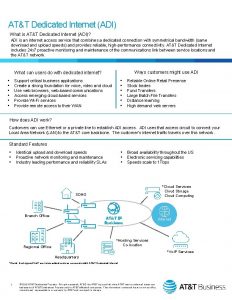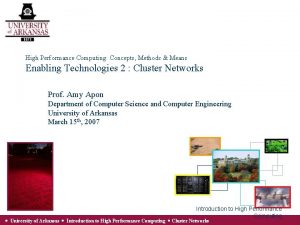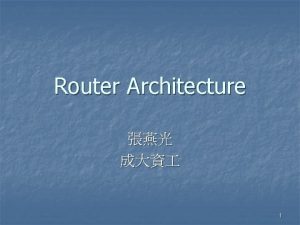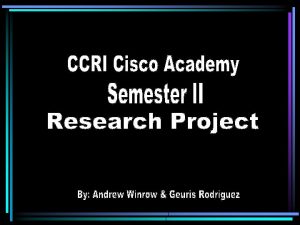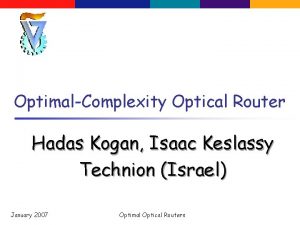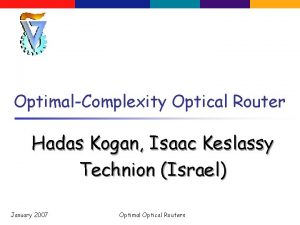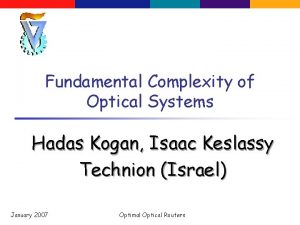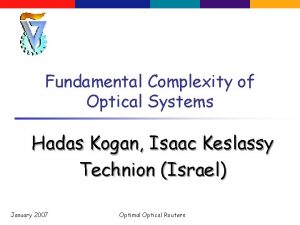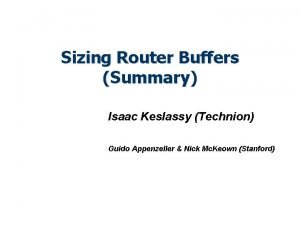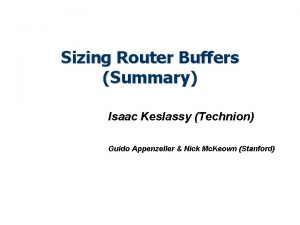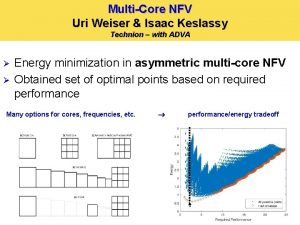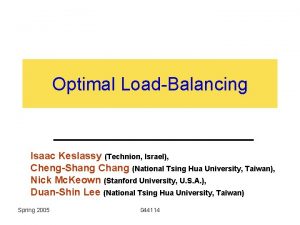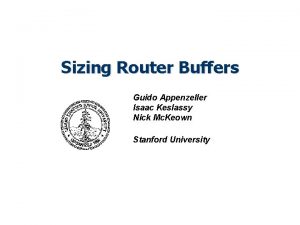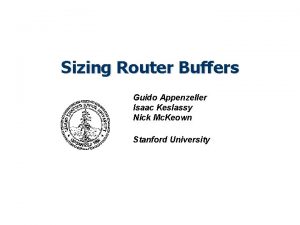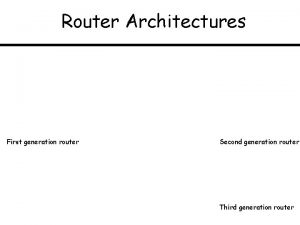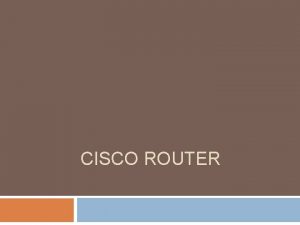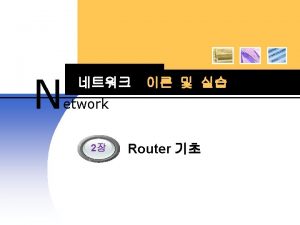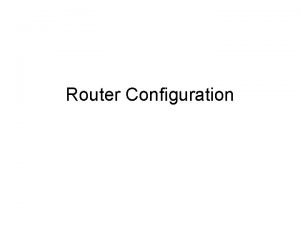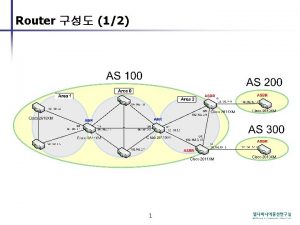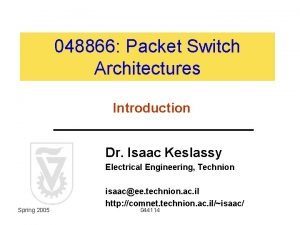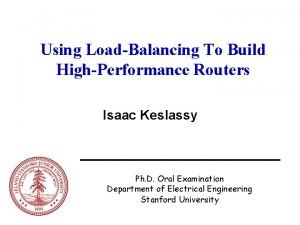OptimalComplexity Optical Router Hadas Kogan Isaac Keslassy Technion


![Power consumption per chassis [Nick Mc. Keown, Stanford] Power consumption per chassis [Nick Mc. Keown, Stanford]](https://slidetodoc.com/presentation_image_h/0800be6b660acd548ee090a38aaae521/image-3.jpg)























- Slides: 26

Optimal-Complexity Optical Router Hadas Kogan, Isaac Keslassy Technion (Israel) January 2007 Optimal Optical Routers

Router – schematic representation Router Electronic to optic Optic to electronic … n Optic to electronic Electronic to optic Lookup Switching Buffering Problem - electronic routers do not scale to optical speeds: Access to electronic memory is slow and power consuming. Data conversions are power consuming as well.
![Power consumption per chassis Nick Mc Keown Stanford Power consumption per chassis [Nick Mc. Keown, Stanford]](https://slidetodoc.com/presentation_image_h/0800be6b660acd548ee090a38aaae521/image-3.jpg)
Power consumption per chassis [Nick Mc. Keown, Stanford]

How about an optical router? ü No electronic memory bottleneck ü No O/E/O conversions BUT: An optical router is thought to be too complex. Is it?

Objective: quantify the fundamental complexity of an optical router

Quantifying complexity n n “Quantify the fundamental complexity of an optical router” reduce into most basic building blocks Switching – 2 x 2 switches (and input/output lines)

Basic optical buffering component Buffering – 2 x 2 switches (and input/output/fiber delay lines) n Mode of operation: n n (a) Write (b) Circulate (c) Read (a) 1 n n (b) 1 (c) 1

The complexity of a system is the minimal number of 2 x 2 switches needed to implement it.

Quantifying complexity n n Complexity lower-bound: To get a state-space of size K in time T, the minimal number C* of 2 x 2 switches needed is: Examples: 7 6 3 8 2 4 1 5 1 2 3 4 5 6 7 8 n Nx. N switch: n Time Slot Interchange with time frame N: 8 7 6 5 4 3 2 1 N 5 1 4 2 8 3 6 7

Quantifying complexity n n A construction algorithm is said to be optimal if its number of 2 x 2 switches grows like the construction complexity. Examples: n Nx. N switch (“Benes is optimal”): [Benes ‘ 65] n Time Slot Interchange: [Jordan et al. ‘ 94].

Optimal buffer emulation January 2007 Optimal Optical Routers

Emulation definition n Original buffer: 1 2 3 4 5 6 t n Buffer emulation (with delay D): 1 2 3 D 4 5 6 t

Emulation idea n Objectif: emulate buffer of size B n n Universal buffer: any policy Idea: schedule using frames of size B n n During any frame of B slots, observe which packets leave the original buffer and color them in blue After some pipeline delay, send these blue packets in the same order F - Frame of size B Frame-based scheduling Optical buffer

Algorithm 3 6 1 1 3 6 4 5 1 2 3 6 departure B 2 n 4 5 6 5 4 3 2 1 Algorithm is optimal n n Complexity Θ(ln B) Complexity lower-bound Θ(ln B) (the Time Slot Interchange is a special case)

Optimal router emulation January 2007 Optimal Optical Routers

What we want: an ideal router n An output-queued push-in-first-out (OQPIFO) switch. Input 1 n n … … Input N Output 1 Output N OQ - Arriving packets are placed immediately in the queue of size B at their destination output. PIFO – packets departure ordering is according to their priority.

What we want: an ideal router n Why it is ideal: n n n OQ: Work-conserving best throughput and average delay. PIFO: Enables FIFO, strict priority, WFQ… But – up to N packets could be destined to the same output: n n n Speed-up for switch Speed-up for queue PIFO is hard to implement.

Finding the complexity n n Direct calculation of complexity seems impossible – what are the states? Alternative way of finding the complexity: n n n Find a lower bound Find an upper bound via algorithm Algorithm complexity = Θ (lower bound) algorithm is optimal

Lower bound - intuition B Input 1 At least Θ(Nln(N)) … … Input N Output 1 Output N At least Θ(ln(B)) Intuition: the complexity of an OQ-PIFO switch is at least Θ(N ln(N) + N • ln(B)) = Θ(N ln(NB))

Lower bound n A frames switch (time/space switch): t=6 t=5 t=4 t=3 t=2 t=1 N 9 8 7 3 2 1 12 11 10 6 5 4 t=9 t=8 t=7 t=6 t=5 t=4 t=3 Frames switch 10 9 8 7 11 5 2 6 12 1 4 3 B n n n A frames switch is a special case of an OQ-PIFO switch. The practical complexity of a frames switch: Complexity {OQ-PIFO} ≥ Θ(Nln(NB)) Now, find an algorithm that reaches this lowerbound

Solving the speed-up problem n output A Example: Leaves Emulating a non-idling OQ-FIFO switch: at time 1 C 1 D 1 Output A Output B … A 2 X X … A 1 Input 1 C 2 Input N … Using parallel buffers to resolve conflicts: n At most one packet can enter a buffer at each time slot (N-1 constraints). n A packet departing at time T should not enter a buffer with a packet departing at T (N-1 constraints). 2 N-1 buffers are enough.

The pigeonhole principle n Proof intuition: Pigeons ↔ Packets Holes ↔ Buffers Input 1 Output 1 n For emulating PIFO behavior – n n The departure process is slightly modified 4 N-2 parallel buffers are required … … … Input N Output N

An optical emulation of an OQ-PIFO switch The pigeonhole principle + Our emulation of an optical buffer = An optical OQ-PIFO switch Optical buffer Output 1 … … Output N Optical buffer

An optical emulation of an OQ-PIFO switch (4 N-2)x. N switch Nx(4 N-2) switch B πB πB B . . . B πB πB B Number of 2 x 2 switches = Θ(Nln. N+Nln. B) = Θ(Nln(NB)) = Θ(lower bound) algorithm is optimal

Conclusion n Buffer fundamental complexity = Θ(ln. B) n OQ-PIFO router fundamental complexity = n Both can be reached using given algorithms Θ(Nln. NB)

Thank you! January 2007 Optimal Optical Routers
 Kogan router
Kogan router Eugene b kogan
Eugene b kogan Kogan pillay
Kogan pillay Yulia kogan
Yulia kogan Sunat mandi wajib ada 5 perkara
Sunat mandi wajib ada 5 perkara Rukun mashul khuffain
Rukun mashul khuffain Rukun solat ada berapa
Rukun solat ada berapa Apa itu hadas besar dan kecil
Apa itu hadas besar dan kecil Rukun mandi wajib
Rukun mandi wajib Najis ainiyah dan hukmiyah
Najis ainiyah dan hukmiyah Características de sierra nevada
Características de sierra nevada Electrical engineering technion
Electrical engineering technion Technion
Technion One drive technion
One drive technion Technion
Technion Technion aerospace
Technion aerospace Ethertype 88f7
Ethertype 88f7 Michael silverstein technion
Michael silverstein technion Technion
Technion Router os
Router os Vo server
Vo server At&t adi
At&t adi Router node
Router node Timbercon router bits
Timbercon router bits Juniper router icon
Juniper router icon Router architecture
Router architecture Cisco 1601
Cisco 1601
